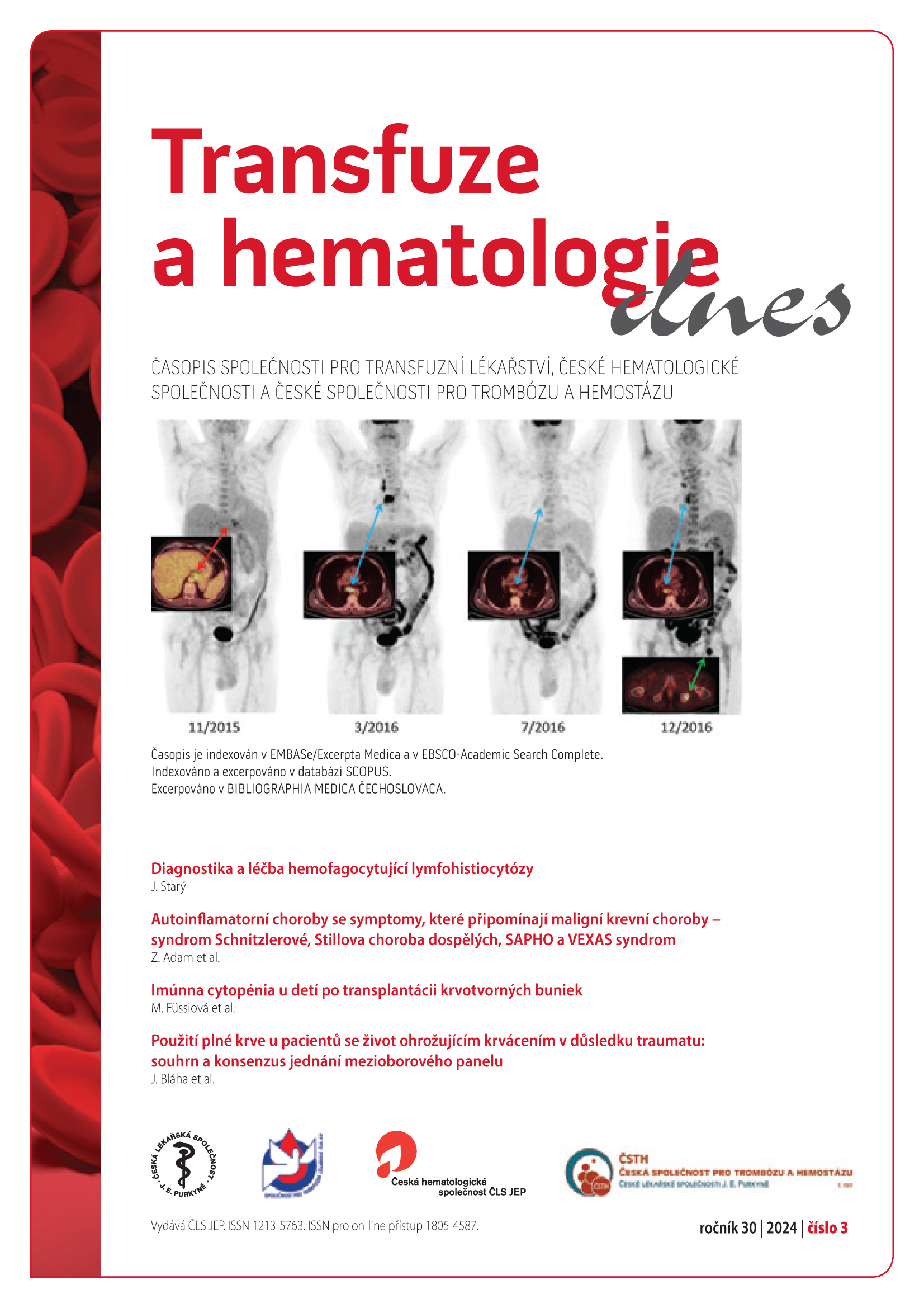Cryopreservation of hematopoietic cells from unrelated donors from the Czech National Bone Marrow Donor Registry in the context of COVID-19 pandemic: are there useless collections?
Keywords:
cryopreservation, donor, registryAbstract
One of the responses the COVID-19 pandemic has been a worldwide increase the number of cryopreserved hematopoietic cells from unrelated donors, mainly due to poorer availability of donors and problems with product transportation. Although cryopreservation is logistically advantageous, the higher risk of not using graft cannot be ignored. We retrospectively evaluated the cryopreservation of donors from the Czech National Register of Bone Marrow Donors (CNMDR) in the period before, during and after the COVID-19 and analyzed unused grafts, including the reasons. The primary goal was to evaluate how cryopreserved grafts collected in given periods for transplant centers(TC) in the Czech Republic and abroad has changed. Of the total number of 374 grafts collected in the period 2018-2023, 72(19%) were cryopreserved. In the period before the pandemic (2018-2/2020), 152 grafts collected and only 2 cryopreservations performed(1.3%), 1 for TC in the CR and 1 for foreign. During the period of the COVID-19 pandemic (3/2020-2022), a total of 144 grafts collected, 58 cryopreserved(40%), 28(19%) for patients from CR and 20(14%) for forein. In the post-pandemic (year 2023), 78 grafts taken, 22 cryopreserved(28%), 8(10%) for patients from CR and 14(18%) for patients from abroad. For period 2018-2023, 3 grafts (0.8%) were not used, all from the period of COVID-19 (1 from 2020 and 2 from 2022) and were collected for patients from foreign TCs. The reason for not-used grafts was in 2 cases death of the patient and 1 patient refused transplant. Our analysis shows a decrease in cryopreserved grafts in the post-pandemic period for patients from CR, while for patients from foreign TCs continues to show a sleightly upward trend. Despite the detected low percentage of unused grafts, it is necessary to perceive the negative ethical impact of the destruction of the graft from the point of view of the donors.


